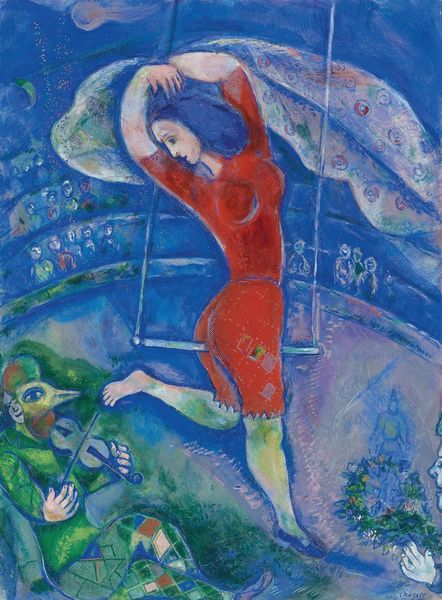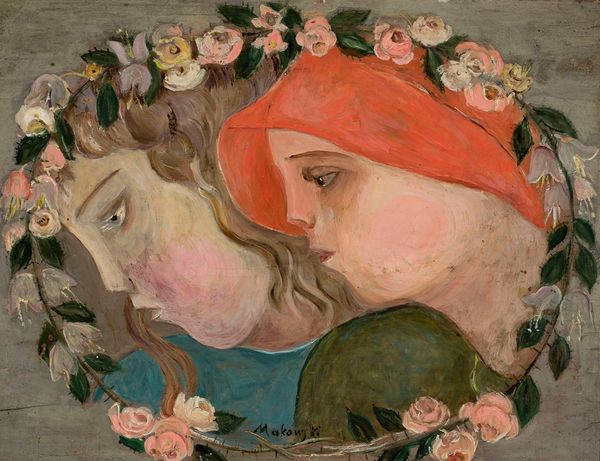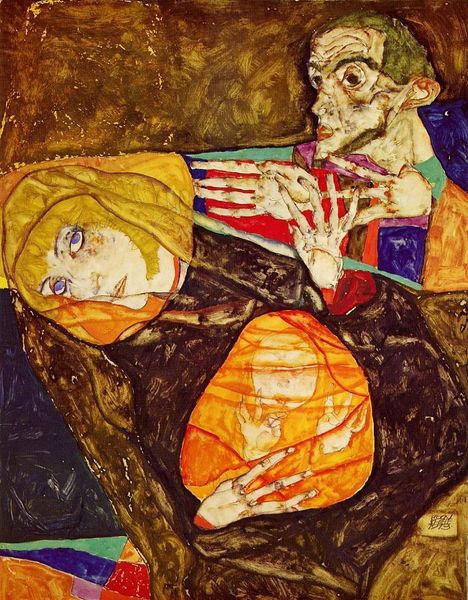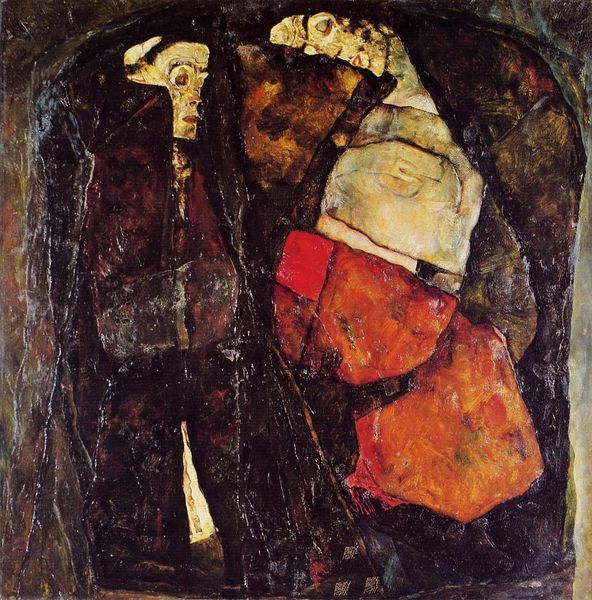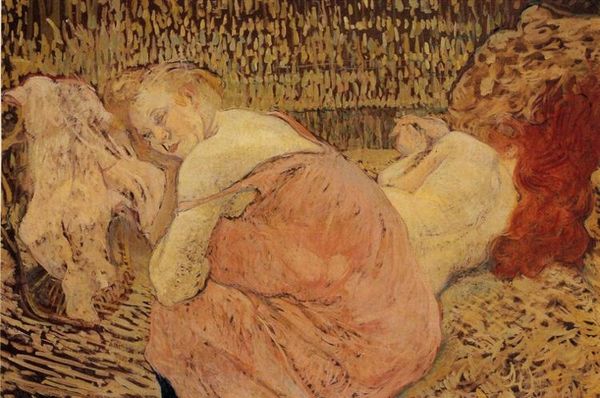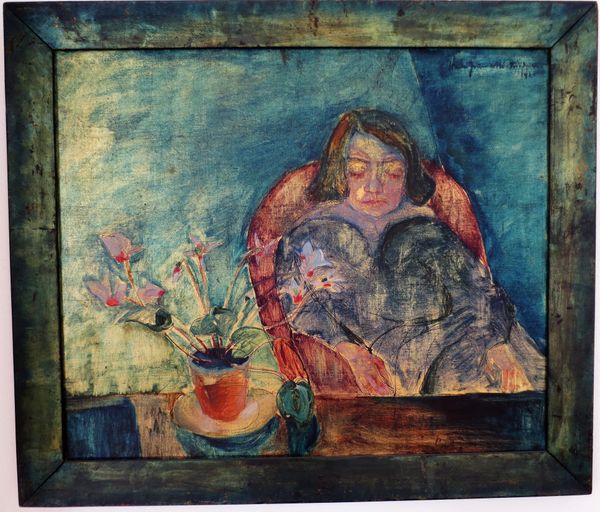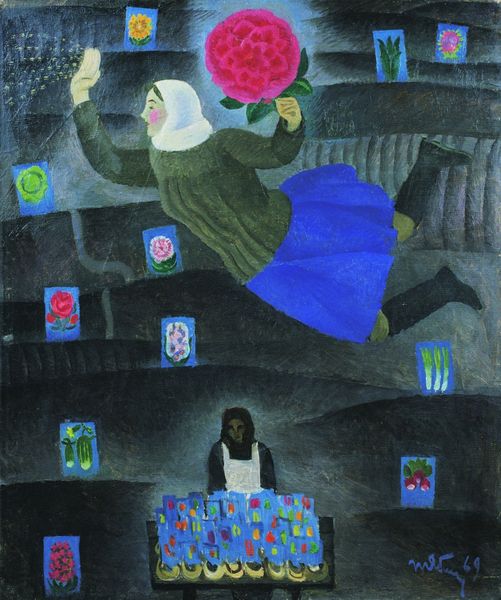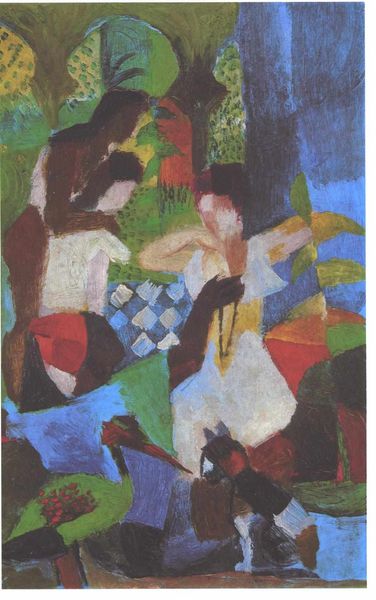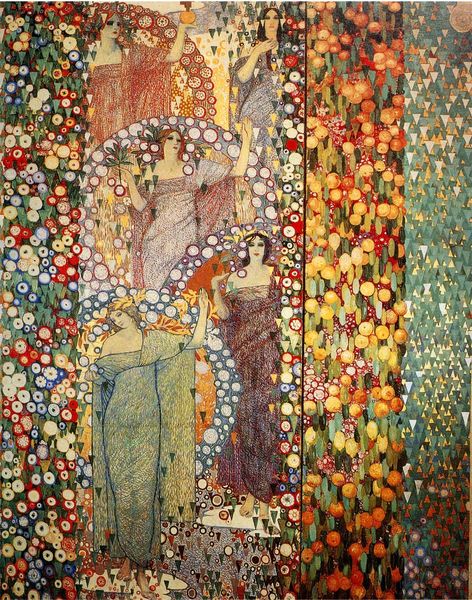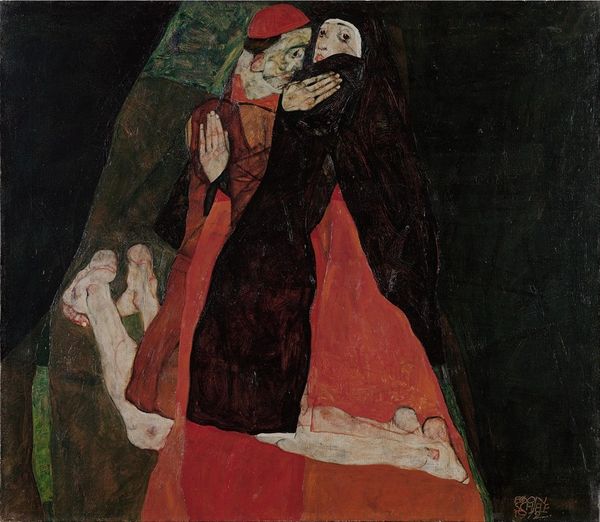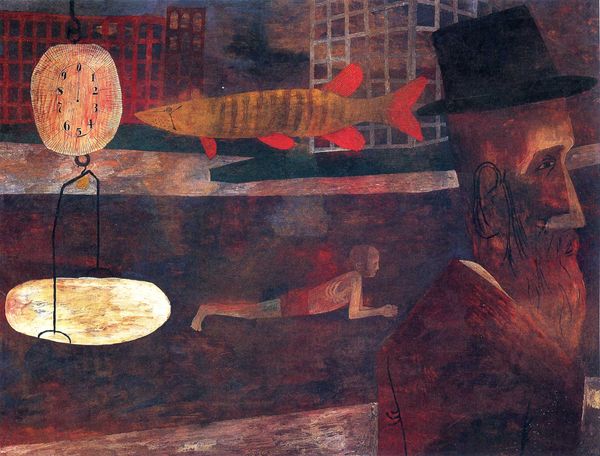
Copyright: Ben Shahn,Fair Use
Editor: So, here we have Peter Krohg's "Spring," painted in 1946. It depicts a figure lying in a field. The colors are surprisingly muted and evoke a sense of melancholy, despite the title. What do you see in this piece, Professor? Curator: What strikes me is the tension, really a silent scream, between the overt optimism promised by "Spring" and the almost palpable sense of post-war weariness radiating from the reclining figure. Look at her! Red, like fresh blood, but drained of vibrancy. Do you see how Krohg renders her gaze, downward and inward, like someone revisiting trauma? Editor: Yes, I do! And the other figures almost seem distant, disconnected. Curator: Exactly. They're skipping rope, aren't they? Pure, unburdened joy...while she’s clutching flowers. It’s almost a visual metaphor for the dissonance felt after times of intense hardship and societal pressure – a yearning for the lightness that feels just out of reach. A bit ironic, considering the date it was painted. What feelings does the brushstroke evoke in you? Editor: It does look somber. I assumed "spring" was the promise of things getting better soon...It makes me wonder if the artist were experiencing post-war melancholy himself? Curator: Perhaps Krohg knew joy wasn’t simply a switch you could flip back on. Maybe "Spring" isn’t a promise, but an ache – the sting of potential rebirth in a world still scarred, yearning to feel. The painting feels to me to be a statement about finding light in dark times, even though that lightness seems elusive. Editor: I see it differently now. Thank you so much! Curator: My pleasure! The world revealed anew each time – that's the joy of art, right?
Comments
No comments
Be the first to comment and join the conversation on the ultimate creative platform.

